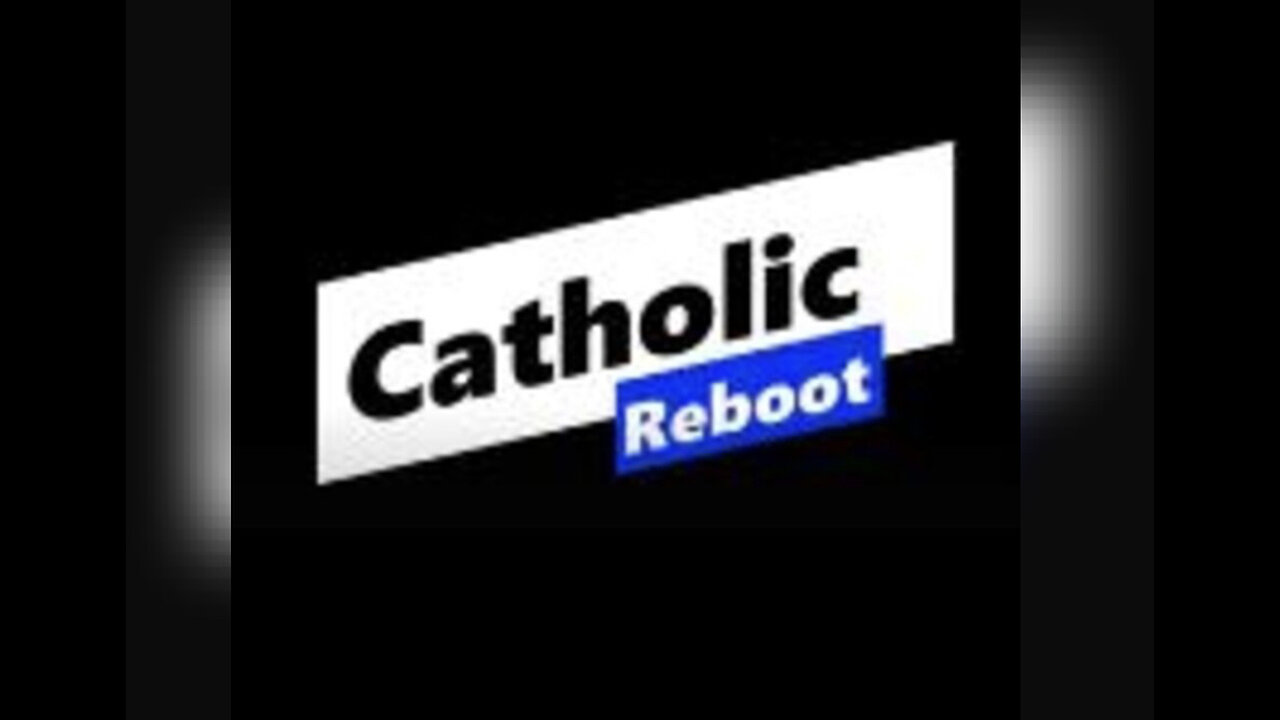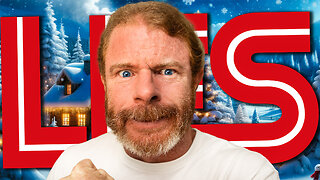Premium Only Content

Episode 2713: Books of the Bible: Ezekiel by Sharon
Books of the Bible: Ezekiel
Sharon: The Book of Ezekiel, from a traditional Catholic perspective, is a profound and multifaceted prophetic work in the Old Testament that delves into themes of divine judgment, restoration, and the glory of God.
Before we get started I will lead you in prayer:
Introductory Prayer:
Heavenly Father, Lord of all creation, we come before You with humble hearts, seeking to understand Your holy word and the mysteries You have revealed through the prophet Ezekiel. Enlighten our minds with the wisdom of Your Holy Spirit so that we may discern the depth of Your justice and mercy. Grant us the grace to recognize Your presence in our lives, to remain steadfast in faith, and to be ever obedient to Your divine will. May this study draw us closer to Your Son, our Lord Jesus Christ, the fulfillment of all prophecy. We ask this through the intercession of the Blessed Virgin Mary, our Mother and Queen. Amen.
Here’s a summary:
Overview:
Ezekiel was a priest and prophet during the Babylonian exile, addressing the Israelites in captivity. Ezekiel was about the same age of Daniel (1:1) who was also exiled to Babylon about a decade earlier. Ezekiel lived among the exiled Jews in Babylon along the river Chebar called Tel-abib (3:5). Remember, the Babylonians brought about ten thousand Jews to the village in 597 which included the last king of Judah Jehoiachin. Ezekiel started his prophecies about 5 years into his exile and he continued for 22 years (29:17). The book is divided into three main sections: Walt, can you start us off with the first one?
Judgment on Israel (Chapters 1–24)
Walt: 1. The Vision of God’s Glory (Chapter 1)
Ezekiel’s prophetic ministry begins with a vision that underscores the transcendence and majesty of God. He sees a chariot borne by four living creatures with four faces (man, lion, ox, and eagle) and wheels within wheels, which symbolize divine omnipresence and omnipotence. The traditional Catholic interpretation sees this vision as highlighting the majesty and inscrutability of God’s will and His active involvement in human history. The four creatures are later associated with the four Evangelists in Christian tradition, linking the Old Testament revelation to the Gospel.
Sharon: 2. The Call and Commission of Ezekiel (Chapters 2–3)
Ezekiel is called as a prophet and is given the task of being a "watchman" for Israel. God commands him to speak hard truths, even though the people are described as stubborn and rebellious. This reflects the Catholic understanding of the prophetic role as one that must uphold divine truth in the face of human resistance, resonating with the mission of the Church to preach the Gospel uncompromisingly.
Walt: 3. Symbolic Actions and Prophecies (Chapters 4–7)
Ezekiel performs symbolic acts, such as lying on his side for 390 days to represent the years of Israel's punishment, and rationing food to signify the scarcity during the siege of Jerusalem. These actions symbolize God’s imminent judgment. Catholics view these symbolic acts as reminders of the Church’s call to penance and vigilance in preparation for divine judgment.
Sharon: 4. The Vision of the Abominations in the Temple (Chapter 8)
Ezekiel is transported in a vision to the Temple in Jerusalem, where he witnesses idolatrous practices, including the worship of foreign deities and images. This defilement of sacred space is seen as a grave sin against God. From a Catholic perspective, this serves as a warning against idolatry and spiritual corruption, reinforcing the importance of pure worship and fidelity to God’s commandments.
Walt: 5. Judgment Executed (Chapters 9–11)
Ezekiel witnesses the departure of God’s glory from the Temple as divine judgment falls on Jerusalem. This departure signifies the withdrawal of divine favor due to the people’s persistent sins. For Catholics, this passage serves as a sobering reminder of the consequences of turning away from God’s grace, emphasizing the necessity of repentance and conversion.
Sharon: 6. Further Prophecies and Lamentations (Chapters 12–24)
These chapters include various symbolic parables and prophecies, such as the parable of the unfaithful wife (Chapter 16) and the allegory of the eagles (Chapter 17). The parable of the unfaithful wife portrays Israel’s spiritual adultery through idolatry, while the allegory of the eagles foreshadows political intrigue and the consequences of misplaced alliances. The Catholic interpretation sees these parables as emphasizing the Church's need to remain steadfast and faithful to God, avoiding the temptations of secular alliances that compromise spiritual integrity.
Ezeliel 24:16-18 Son of man, behold I take from thee the desire of thy eyes with a stroke: and thou shalt not lament, nor weep: neither shall thy tears run down. [17] Sigh in silence, make no mourning for the dead: let the tire of thy head be upon thee, and thy shoes on thy feet, and cover not thy face, nor eat the meat of mourners. [18] So I spoke to the people in the morning, and my wife died in the evening: and I did in the morning as he had commanded me. Walt can you take us into the next section?
Oracles Against Foreign Nations (Chapters 25–32)
Walt:1. Judgments on Neighboring Nations (Chapters 25–28)
Ezekiel pronounces oracles against Ammon, Moab, Edom, Philistia, Tyre, and Sidon. These nations are condemned for their hostility and malice toward Israel, highlighting that God’s sovereignty extends beyond Israel to all nations. In Catholic tradition, this is seen as an affirmation of the universal kingship of God and a foreshadowing of the Church’s mission to evangelize all nations, emphasizing the truth that God judges nations by their actions toward His chosen people and His divine plan.
Sharon: 2. The Fall of Tyre (Chapters 26–28)
Tyre’s downfall is detailed with vivid imagery, symbolizing the fate of those who take pride in their wealth and power. Chapter 28 includes a lamentation that describes the king of Tyre in terms that some Church Fathers have interpreted as an allusion to Lucifer's fall due to pride. This interpretation highlights the dangers of pride and self-reliance, reinforcing the Catholic teaching that humility and reliance on God are essential virtues.
Walt: 3. Judgment on Egypt (Chapters 29–32)
Egypt, representing worldly power and false security, is judged for its arrogance and failure to recognize God’s sovereignty. These chapters contain prophecies against Pharaoh and depict his defeat as a sign of God’s power over all earthly rulers. Catholics often read these chapters as a warning against putting trust in secular power and wealth rather than divine providence. Sharon, can you start us on the next section?
Restoration and Future Hope (Chapters 33–48)
Sharon: 1. The Prophet as Watchman and Call to Repentance (Chapter 33)
Ezekiel reiterates his role as a watchman, emphasizing that individual responsibility and repentance are central to receiving God’s mercy. This resonates deeply with Catholic teachings on personal accountability and the sacrament of confession, where individuals are called to recognize their sins and seek forgiveness.
Walt: 2. The Vision of the Valley of Dry Bones (Chapter 37)
This powerful vision of dry bones coming to life symbolizes the restoration of Israel and is seen as a profound foreshadowing of the resurrection of the dead. For Catholics, this chapter is rich with eschatological meaning, representing both the hope of the bodily resurrection at the end of time and the spiritual rebirth available through the Church’s sacraments.
Ezkiel 37:4-5 And he said to me: Prophesy concerning these bones; and say to them: Ye dry bones, hear the word of the Lord. 5 Thus saith the Lord God to these bones: Behold, I will send spirit into you, and you shall live.
Sharon: 3. The Messianic Kingdom (Chapters 34 and 37)
Ezekiel speaks of God Himself shepherding His people and establishing a covenant of peace. This shepherd image is understood as a prophecy of Christ, the Good Shepherd, who leads His flock with justice and mercy. The Catholic perspective holds that this prefigures Christ’s role as the fulfillment of the Old Testament promises, leading to the establishment of the Church as the new Israel.
34: 23 AND I WILL SET UP ONE SHEPHERD OVER THEM, and he shall feed them, even my servant David: he shall feed them, and he shall be their shepherd. 24 And I the Lord will be their God: and my servant David the prince in the midst of them: I the Lord have spoken it.
4. The Vision of the New Ezeliel 34:11-15 For thus saith the Lord God: Behold I myself will seek my sheep, and will visit them. [12] As the shepherd visiteth his flock in the day when he shall be in the midst of his sheep that were scattered, so will I visit my sheep, and will deliver them out of all the places where they have been scattered in the cloudy and dark day. [13] And I will bring them out from the peoples, and will gather them out of the countries, and will bring them to their own land: and I will feed them in the mountains of Israel, by the rivers, and in all the habitations of the land. [14] I will feed them in the most fruitful pastures, and their pastures shall be in the high mountains of Israel: there shall they rest on the green grass, and be fed in fat pastures upon the mountains of Israel. [15] I will feed my sheep: and I will cause them to lie down, saith the Lord God.
Walt: Temple (Chapters 40–48)
Ezekiel’s detailed vision of a new Temple symbolizes God’s restored presence among His people. This vision is interpreted by the Church Fathers and traditional Catholic teaching as a prefiguration of the Church, the mystical body of Christ, where true worship and God’s presence dwell. The flowing waters from the Temple (Chapter 47) represent the graces of the Holy Spirit, which flow from Christ and His Church, bringing life and renewal to the world.
Ezekiel 47:1 And he brought me again to the gate of the house, and behold waters issued out from under the threshold of the house toward the east: for the forefront, of the house looked toward the east: but the waters came down to the right side of the temple to the south part of the altar.
Sharon: 5. The Division of the Land (Chapter 47–48)
The final chapters outline the apportioning of land among the tribes of Israel, symbolizing the fulfillment of God’s promises and the restoration of unity. Catholics view this as an image of the heavenly Jerusalem, where the faithful are united in communion with God. The restoration is ultimately seen as a foretaste of the New Heaven and New Earth, where divine justice and peace will reign eternally.
Ezkiel 47:21-23 And you shall divide this land unto you by the tribes of Israel: [22] And you shall divide it by lot for an inheritance to you, and to the strangers that shall come over to you, that shall beget children among you: and they shall be unto you as men of the same country born among the children of Israel: they shall divide the possession with you in the midst of the tribes of Israel. [23] And in what tribe soever the stranger shall be, there shall you give him possession, saith the Lord God
Walt, can you go through the key Themes?
Key Themes:
God’s Holiness and Justice: Ezekiel emphasizes that God’s judgments are righteous and that Israel’s sufferings are a result of their sins, particularly idolatry and infidelity to the covenant.
Vision of God’s Glory: The famous vision of the divine chariot (Merkabah) in Chapter 1 reveals God’s transcendence and His omnipotent presence, symbolizing that even in exile, God remains with His people.
The Temple and True Worship: Ezekiel stresses the importance of authentic worship and the sacredness of the Temple. In Chapters 40–48, the vision of a restored Temple signifies God’s renewed covenant and His dwelling among His people, prefiguring the spiritual renewal found in Christ and the Church.
Prophetic Symbolism: The book uses striking imagery and symbolic actions (e.g., the valley of dry bones in Chapter 37) to convey the promise of Israel’s spiritual revival and foreshadow the resurrection of the dead.
Messianic Prophecies: Ezekiel alludes to the coming "Shepherd King" (Chapter 34:23-24), a clear reference to the Messiah who will rule justly and fulfill the promises made to David.
Sharon: Catholic Interpretation:
From a traditional Catholic viewpoint, Ezekiel's prophecies are seen as deeply connected to the Church's teachings on redemption and eschatology:
Types and Figures of Christ: Ezekiel’s prophecies often prefigure Christ as the Good Shepherd and the one who brings life and restoration to the faithful, fulfilling the Old Covenant through His death and resurrection.
Restoration of Israel as the Church: The vision of dry bones is interpreted as the renewal of humanity through Christ, bringing spiritual life to those who are dead in sin.
Eucharistic Connection: The emphasis on God’s presence in the Temple is often linked to the Real Presence of Christ in the Eucharist, underscoring the continuity of divine worship from the Old Covenant to its fulfillment in the New.
Walt: Moral and Spiritual Lessons:
Ezekiel's call to repentance and fidelity to God remains a strong exhortation for Catholics to live a life oriented toward God’s commandments and to participate in the sacramental life of the Church. The book serves as a reminder of divine mercy alongside justice, encouraging believers to seek true conversion and hope in God’s ultimate plan for salvation.
In summary, Ezekiel stands as a testament to God’s unchanging desire for His people’s holiness, foretelling the coming of Christ and the spiritual restoration offered through His Church.
Concluding Prayer:
Almighty and Eternal God, we thank You for the gift of Your word and the insights You have granted us through the teachings of Your prophet Ezekiel. Strengthen our resolve to live in accordance with Your commands, to be watchful, and to turn from our sins in true repentance. May the vision of restoration and eternal hope inspire us to strive for holiness and spread Your truth to those around us. Let Your Holy Spirit guide our paths, and may we find our ultimate refuge and joy in the sacred heart of Jesus, our Savior and Redeemer. Through Christ our Lord. Amen.
-
 58:10
58:10
Kimberly Guilfoyle
11 hours agoAmerica is Back & The Future is Bright: A Year in Review | Ep. 183
67K52 -
 3:03:27
3:03:27
vivafrei
16 hours agoEp. 242: Barnes is BACK AGAIN! Trump, Fani, J6, RFK, Chip Roy, USS Liberty AND MORE! Viva & Barnes
118K96 -
 8:09:50
8:09:50
Dr Disrespect
14 hours ago🔴LIVE - DR DISRESPECT - MARVEL RIVALS - GOLD VANGUARD
190K31 -
 1:15:00
1:15:00
Awaken With JP
13 hours agoMerry Christmas NOT Happy Holidays! Special - LIES Ep 71
185K140 -
 1:42:21
1:42:21
The Quartering
14 hours agoTrump To INVADE Mexico, Take Back Panama Canal Too! NYC Human Torch & Matt Gaetz Report Drops!
143K101 -
 2:23:15
2:23:15
Nerdrotic
14 hours ago $12.44 earnedA Very Merry Christmas | FNT Square Up - Nerdrotic Nooner 453
110K11 -
 1:14:05
1:14:05
Tucker Carlson
13 hours ago“I’ll Win With or Without You,” Teamsters Union President Reveals Kamala Harris’s Famous Last Words
204K367 -
 1:58:31
1:58:31
The Dilley Show
13 hours ago $34.00 earnedTrump Conquering Western Hemisphere? w/Author Brenden Dilley 12/23/2024
154K42 -
 1:09:59
1:09:59
Geeks + Gamers
14 hours agoSonic 3 DESTROYS Mufasa And Disney, Naughty Dog Actress SLAMS Gamers Over Intergalactic
105K21 -
 51:59
51:59
The Dan Bongino Show
15 hours agoDemocrat Donor Admits The Scary Truth (Ep. 2393) - 12/23/2024
904K3.05K